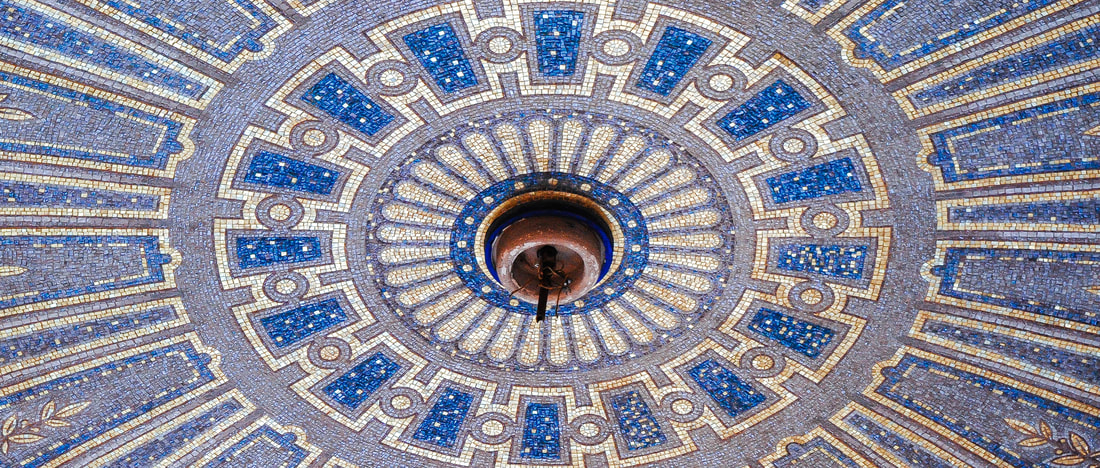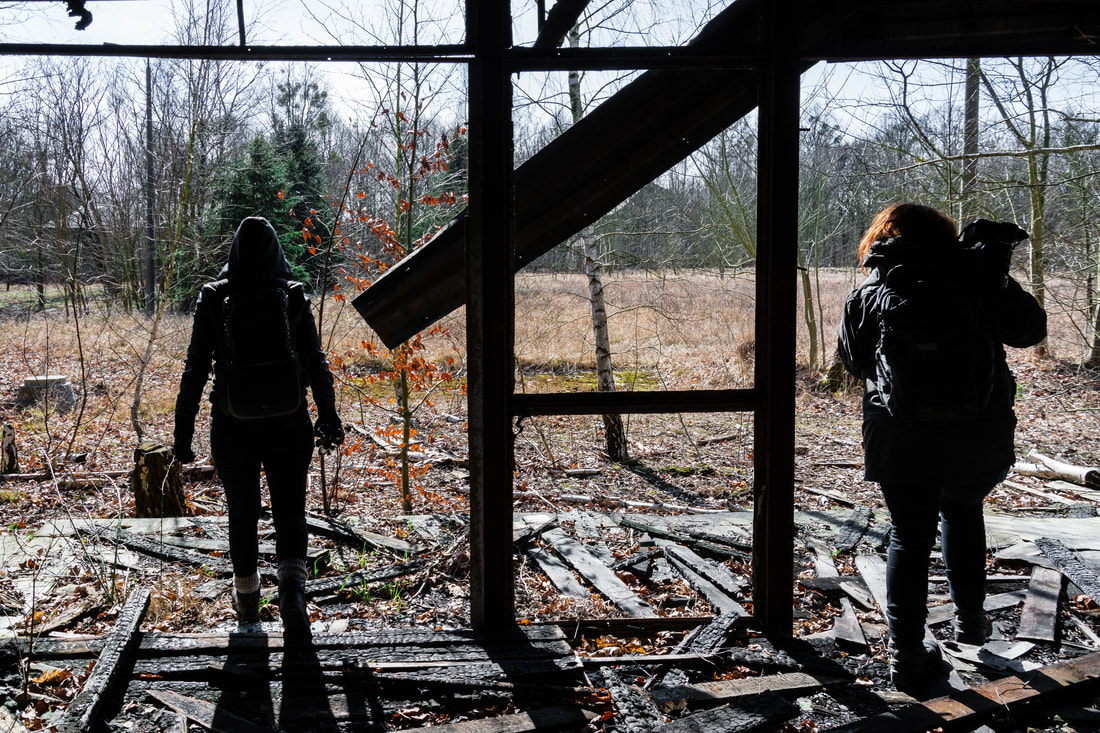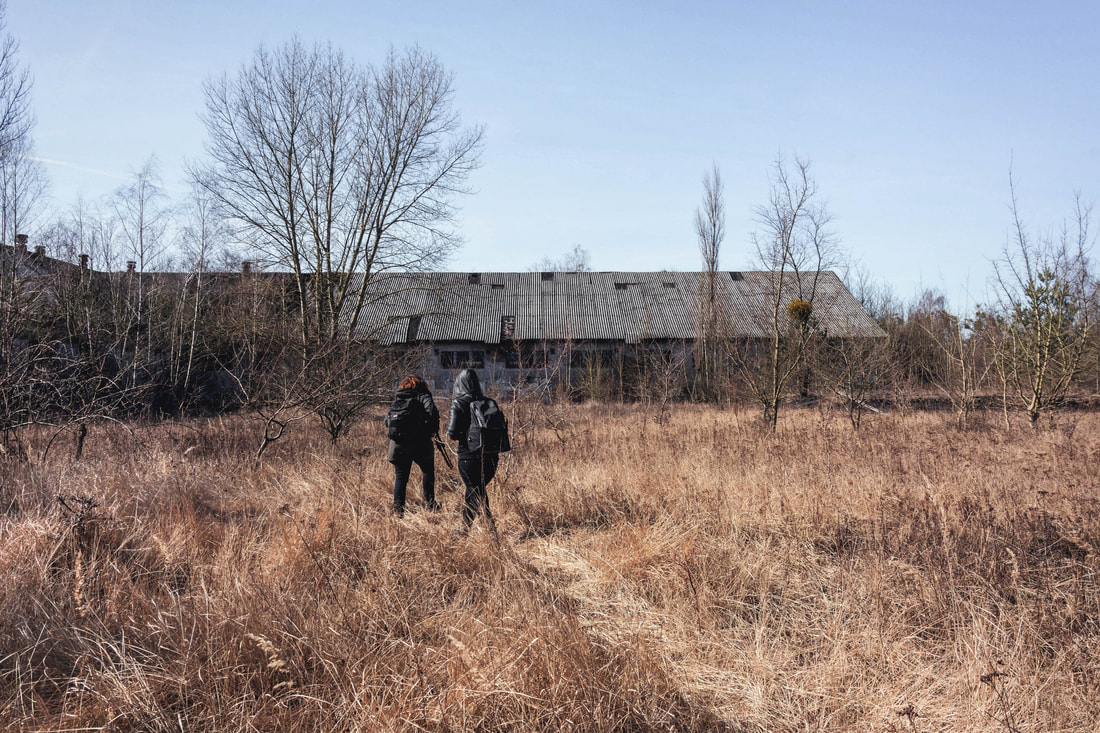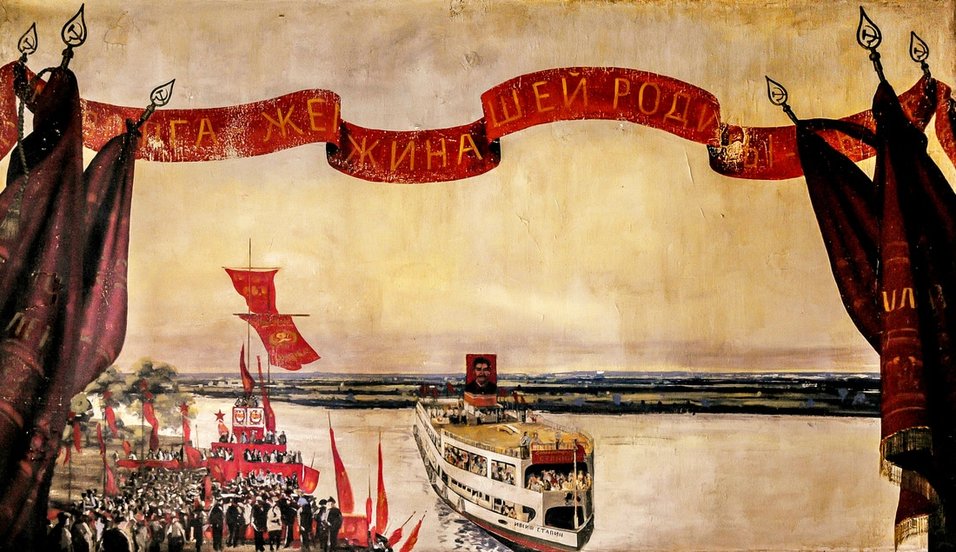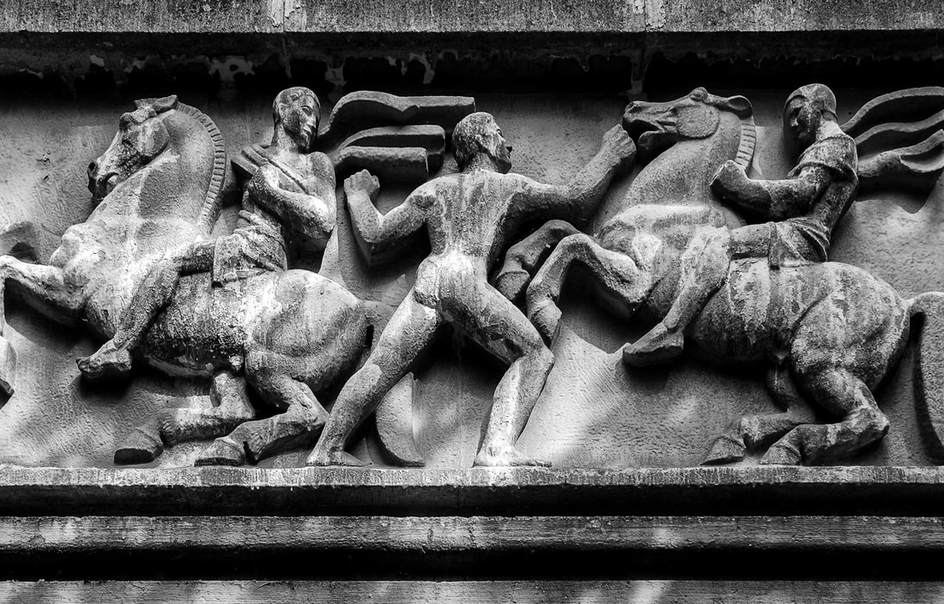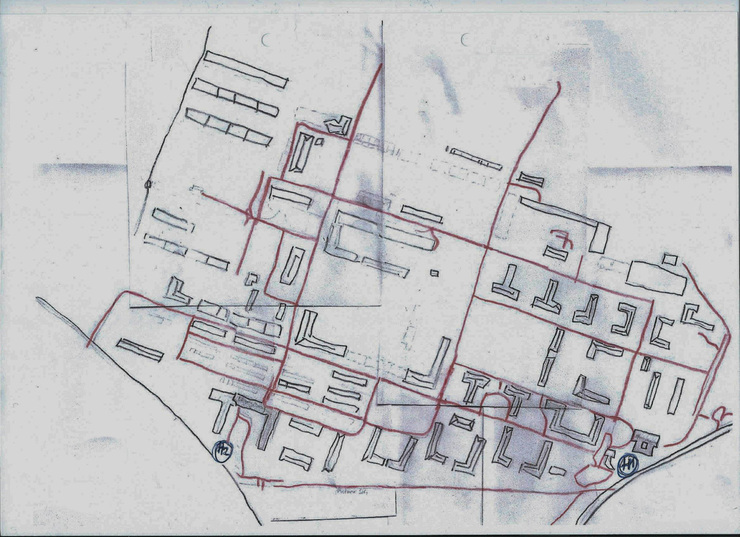Kaserne Krampnitz
(Abriss im Gange - Demolition in progress)
Im Jahr 1937 wurde die ehemalige Kaserne Krampnitz als Heeresreitschule, nach Plänen des Architekten Robert Kirsch, errichtet. Der Bau dieser war letztlich eine Verlagerung einer bereits bestehenden Kavallerieschule, die bereits preußischen Ursprungs (1817) war und ihren Standort in Hannover hatte. So wurde zu Zeiten des Nationalsozialismus, vor allem um die Wehrmacht auszubauen und aufgrund eines nahe gelegenen Truppenübungsplatzes, dieser Umzug letztendlich vollzogen. Später, nachdem Pferde im Krieg allmählich an Bedeutung verloren, wurde das Areal auch als Panzertruppenschule genutzt und trug letztlich den Namen "Kavallerie- und Panzertruppenschule".
Nach dem Ende des Zweiten Weltkriegs wurde die Militäranlage von den sowjetischen Besatzern beschlagnahmt und weiterhin als Kaserne genutzt. Die Sowjets vergrößerten das heute 120 ha große Gelände durch eigene Plattenbauten nach sozialistischem Vorbild sowie einigen Garagen. Teilweise lebten hier bis zu 10.000 Soldaten und Zivilisten. Im Jahre 1992, im Zuge des allgemeinen Abzugs der sowjetischen Streitkräfte aus Deutschland, verließen diese das Gelände. Seitdem liegt das Areal vollständig brach und wurde lediglich hin und wieder als Filmkulisse genutzt. So drehte beispielsweise Quentin Tarantino Teile seines Films Inglorious Basterds hier. Auch Szenen aus Filmen wie Resident Evil, Monuments Men und Enemy at the Gates sind hier entstanden.
Das das Gelände passende Filmkulissen bietet ist nicht verwunderlich. Verwunschen liegt die einstige Militärstadt da. Durchs Dickicht des weitläufigen Geländes streifen Wildschweinrotten und so ziemlich alle erdenklichen Wildtiere. Der Mensch ist gegangen und wieder einmal hat sich die Natur selbst ein Paradies geschaffen, dessen Idyll lediglich hin und wieder von Neugierigen jeglicher Couleur - etwa von Vandalen, Plünderern, Geschichtsbegeisterten oder Fotografen - gestört wird. Das Gelände selbst ist geprägt von der Mixtur aus dem repräsentativen Architekturstil der 30er und den eher zweckmäßigen Beiträgen der sowjetischen Besatzern. So finden sich auch noch überall Relikte aus beiden Epochen, was das Areal wirklich besonders macht.
Der Abbruch des Geländes hat bereits begonnen. Bald wird hier ein neues Wohnviertel entstehen.
Nach dem Ende des Zweiten Weltkriegs wurde die Militäranlage von den sowjetischen Besatzern beschlagnahmt und weiterhin als Kaserne genutzt. Die Sowjets vergrößerten das heute 120 ha große Gelände durch eigene Plattenbauten nach sozialistischem Vorbild sowie einigen Garagen. Teilweise lebten hier bis zu 10.000 Soldaten und Zivilisten. Im Jahre 1992, im Zuge des allgemeinen Abzugs der sowjetischen Streitkräfte aus Deutschland, verließen diese das Gelände. Seitdem liegt das Areal vollständig brach und wurde lediglich hin und wieder als Filmkulisse genutzt. So drehte beispielsweise Quentin Tarantino Teile seines Films Inglorious Basterds hier. Auch Szenen aus Filmen wie Resident Evil, Monuments Men und Enemy at the Gates sind hier entstanden.
Das das Gelände passende Filmkulissen bietet ist nicht verwunderlich. Verwunschen liegt die einstige Militärstadt da. Durchs Dickicht des weitläufigen Geländes streifen Wildschweinrotten und so ziemlich alle erdenklichen Wildtiere. Der Mensch ist gegangen und wieder einmal hat sich die Natur selbst ein Paradies geschaffen, dessen Idyll lediglich hin und wieder von Neugierigen jeglicher Couleur - etwa von Vandalen, Plünderern, Geschichtsbegeisterten oder Fotografen - gestört wird. Das Gelände selbst ist geprägt von der Mixtur aus dem repräsentativen Architekturstil der 30er und den eher zweckmäßigen Beiträgen der sowjetischen Besatzern. So finden sich auch noch überall Relikte aus beiden Epochen, was das Areal wirklich besonders macht.
Der Abbruch des Geländes hat bereits begonnen. Bald wird hier ein neues Wohnviertel entstehen.
The former military camp, built by the architect Robert Kirsch, was opened in the year 1937 and was used by the Wehrmacht (German army during the Nazi era) as Heeresreitschule (cavalry school). The origin of the military complex dates back to the year 1817, when in Hanover a similar cavalry school was established for the Prussian army. When the Nazis started to strengthen their army, the original cavalry school moved from Hanover to Krampnitz, where a military training area had already existed. Later during the war - after horses were replaced by new technology in form of tanks - the grounds were used as armor school as well - the new name then: "Cavalry and Armour school".
After WW II. and after the fall of the Third Reich, the Soviet occupiers took over the military base and even built their own residential blocks following the typical socialist construction design. After that the area encompassed around 120 acres. Around 10,000 Soviets lived on the site. In the early 1990s, all Soviet troops left Germany for good. Since then the military base has been abandoned totally and was only used as film scenery from time to time. Quentin Tarantino, for example, shot parts of his film Inglorious Basterds on the grounds. Also scenes from films like Resident Evil, Monuments Men and Enemy at the Gates were filmed here.
It is not hard to imagine why the area is so popular as filming location. The former military city appears to be like straight out of a fairy tale. An enchanted ghost town taken back by nature itself. Another example for how the absence of man creates a paradise, especially for herds of wild boars and other wildlife. An idyllic scenery only disturbed from time to time by uninvited and nosy guests like vandals, looters, people interested in (military) history or photographers. The grounds itself is marked by the mixture of different times of use - on the one hand the representative architecture of the '30s and on the other hand the plain functional buildings added by the Soviet occupiers. There can still be found remnants of both times which makes the area so special.
Now, demolition of the area in favor of establishing a new housing area has already begun.
After WW II. and after the fall of the Third Reich, the Soviet occupiers took over the military base and even built their own residential blocks following the typical socialist construction design. After that the area encompassed around 120 acres. Around 10,000 Soviets lived on the site. In the early 1990s, all Soviet troops left Germany for good. Since then the military base has been abandoned totally and was only used as film scenery from time to time. Quentin Tarantino, for example, shot parts of his film Inglorious Basterds on the grounds. Also scenes from films like Resident Evil, Monuments Men and Enemy at the Gates were filmed here.
It is not hard to imagine why the area is so popular as filming location. The former military city appears to be like straight out of a fairy tale. An enchanted ghost town taken back by nature itself. Another example for how the absence of man creates a paradise, especially for herds of wild boars and other wildlife. An idyllic scenery only disturbed from time to time by uninvited and nosy guests like vandals, looters, people interested in (military) history or photographers. The grounds itself is marked by the mixture of different times of use - on the one hand the representative architecture of the '30s and on the other hand the plain functional buildings added by the Soviet occupiers. There can still be found remnants of both times which makes the area so special.
Now, demolition of the area in favor of establishing a new housing area has already begun.
Grobe Skizze des etwa 120 ha großen Areals - Draft of the around 120 ha large area
(© S. Schäfer)
Satellitenansicht - Aerial view
(©google-earth, 2018)
